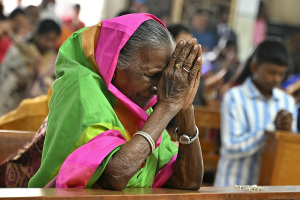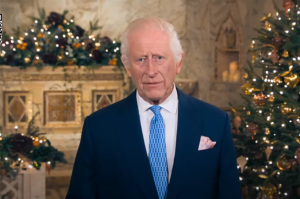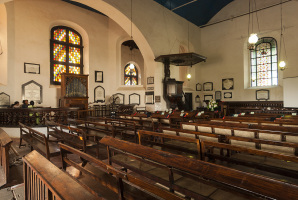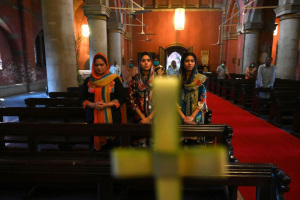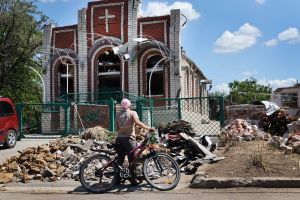Ex-SWBTS professors launch new archaeology program at Nashville liberal arts university

Former Southwestern Baptist Theological Seminary professors are launching a new archeology program at a liberal arts university in Tennessee and will take their research with them after their degree programs and positions were axed by seminary budget cuts.
The research of what was once the largest archeology program at an evangelical institution will now be housed at the Church of Christ-affiliated Lipscomb University in Nashville.
Lipscomb announced Wednesday that it launched the Lanier Center for Archaeology. The school has also acquired the research of the influential Tandy Institute for Archeology. According to the university, the Lanier Center is the “first of its kind” archeology program “that is part of a university instead of a seminary setting.”
The Lanier Center for Archaeology will be led by former SWBTS faculty members Steven Ortiz, the director of the Tel Gezer Excavation Project in Israel, and Tom Davis, who directed the Tandy Institute’s Kourion Urban Space Project in Cyprus.
“We are very pleased that the center will be housed within a university setting as it not only involves scripture but also natural sciences, social sciences, history and more,” Ortiz said in a statement. “It is such a great fit for the breadth of what archaeology is.”
The Tandy Institute was launched at SWBTS in 1983 and has served as an “umbrella institute for various centers, museums, and academic programs” that have contributed to archaeology and archaeological research.
But that all came to an end this spring after SWBTS ended the degree program and let go of five professors in April, citing financial constraints.
SWBTS’ decision to cut the program comes amid an “institutional reset” that has occurred in the last two years since former President Paige Patterson was fired from the seminary after it was alleged that he had mishandled on-campus rape allegations.
Lipscomb provost W. Craig Bledsoe said the university is “fortunate” to acquire the experience of two of the “world’s foremost experts in archaeology.”
“The Lanier Center for Archaeology adds a new dimension to the university’s academic offerings with its first Ph.D. program,” Lipscomb said in a statement. “The field research opportunities that are also part of this program greatly expands the scope of what we do.”
Lipscomb’s new Lanier Center will offer a doctorate program in archeology in the ancient Near East and a master’s degree program in archeology and biblical studies beginning in January 2021.
The new center will also feature archaeological research libraries, an extensive artifact study collection and a ceramic restoration lab. The new center will continue to engage in Tandy Institute projects such as the Tel Gezer excavation and the Kourion Urban Space project, in addition to the Karnak epigraphic survey in Egypt and the Tel Burna excavation project in Israel.
Robert R. Cargill, an associate professor of Judaism and Christianity at the University of Iowa, praised Lipscomb for launching the new center. Cargill said in an op-ed that the summer of 2020 will be remembered by veterans of the Gezer excavations as the “summer that Lipscomb University saved biblical archaeology.” Cargill was joyed that Lipscomb acquired some of the Tandy Institute’s museum archives, study collections, research, as well as its master’s and Ph.D. programs.
“In the end, Ortiz, his colleague, his research, and his students all wound up in a much better place,” Cargill wrote. “While SWBTS continues to recalibrate itself to focus exclusively on the ‘training of pastors and other ministers of the Gospel for the churches of the Southern Baptist Convention,’ Lipscomb University has brought profound resources to its institution almost overnight while earning the praise of the archaeological community worldwide.”
Provost Bledsoe said that it is “unique” to have an archeology center housed in an “interdisciplinary academic setting.”
“This will provide our faculty with new opportunities to collaborate as well as to share and apply their knowledge and expertise,” Bledsoe said. “We look forward to the impact this program will have not only on Lipscomb but also on the field of archaeological research on the whole.”
According to Cargill, the new archeology center was made possible thanks to Mark Lanier, an attorney and Lipscomb graduate.
“Long the archaeological benefactor, the [American Schools of Oriental Research] philanthropist saw an opportunity. He called up his alma mater and inquired about the possibility of having Lipscomb University … hire Ortiz along with classical archaeologist Tom Davis,” Cargill added.
“An old friend from my Pepperdine years (another Church of Christ-affiliated school), who now teaches at Lipscomb, contacted me about Steve Ortiz. He said they might have the opportunity to hire him.”
Cargill said he told his friend to hire Ortiz as soon as he can.
“Steve Ortiz is an exceptional archaeologist,” Cargill remembers telling his friend at the time. “I don’t know what they were thinking letting him go. If you can get him, it would be a coup for Lipscomb.”

















